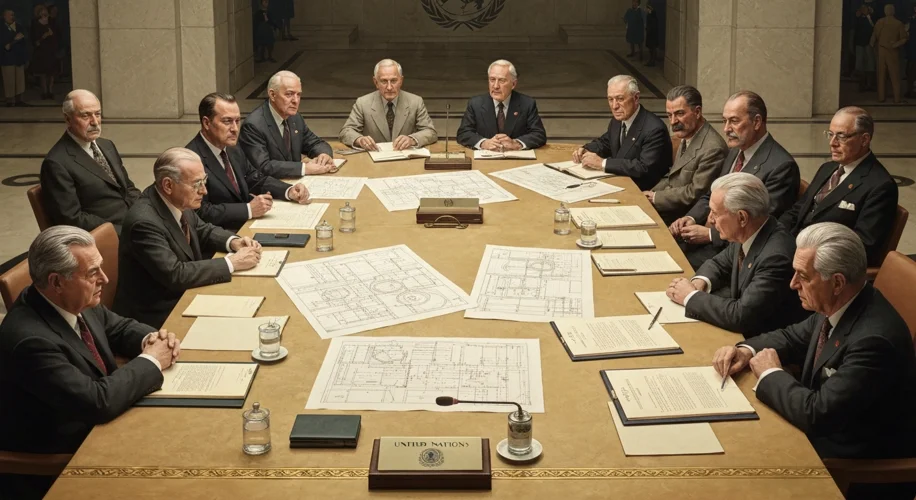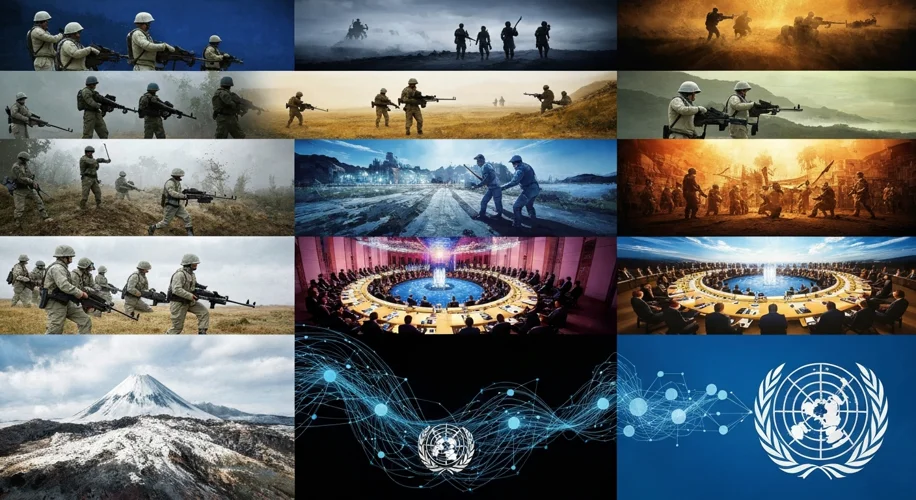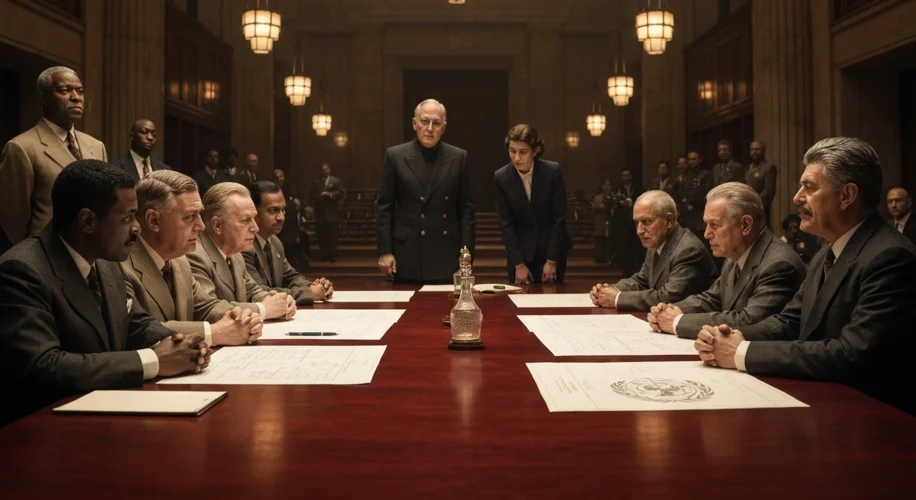The echoing silence of war had barely begun to fade when the world’s leaders, weary but resolute, gathered with a singular, monumental purpose: to forge a future where such devastation would never again be unleashed upon humanity. This was the genesis of the United Nations, an organization born from the ashes of World War II, a testament to the profound human yearning for peace and collective security.
The backdrop to its creation was a global landscape scarred by unprecedented conflict. The horrors of the Second World War, from the blitzkrieg’s relentless advance to the chilling efficiency of genocide, had exposed the catastrophic failure of existing international structures, like the League of Nations, to prevent large-scale aggression. The world had witnessed the unimaginable, and the survivors understood that isolationism was no longer a viable option. The very air crackled with a desperate hope for a new order, one built on cooperation rather than confrontation.

The architects of this new global body were a coalition of Allied powers, led by the United States, Great Britain, and the Soviet Union. President Franklin D. Roosevelt, who coined the term “United Nations” during the war, envisioned an organization that would promote peace and cooperation among nations. His counterpart, British Prime Minister Winston Churchill, a staunch advocate for collective security, lent his powerful voice to the cause. Even amidst the wartime tensions between the Western Allies and the Soviet Union, there was a shared recognition that a post-war world order necessitated a forum for dialogue and joint action.
The journey towards the UN’s formal establishment was marked by a series of crucial conferences. The Dumbarton Oaks Conference in 1944 laid the groundwork for the UN’s structure and functions, proposing a Security Council with permanent members holding veto power – a contentious but ultimately accepted compromise to ensure the participation of major powers. The Yalta Conference in early 1945 resolved key issues regarding the Security Council’s voting procedures, paving the way for the official chartering.
Finally, on October 24, 1945, the United Nations officially came into existence when its Charter was ratified by a majority of the signatories, including the five permanent members of the Security Council: China, France, the Soviet Union, the United Kingdom, and the United States. The UN’s headquarters were established in New York City, a symbolic choice situated at the heart of a globalized world.
The UN’s overarching purpose, as enshrined in its Charter, is to maintain international peace and security, develop friendly relations among nations, achieve international cooperation in solving global problems, and be a center for harmonizing the actions of nations. Its key organs include the General Assembly, where all member states have equal representation; the Security Council, responsible for maintaining peace and security, with the power to issue binding resolutions; the Economic and Social Council; the International Court of Justice; and the Secretariat, headed by the Secretary-General.
Over its nearly eight decades of existence, the UN has navigated a complex and often turbulent international arena. It has passed numerous significant resolutions, from condemning apartheid in South Africa and advocating for human rights to addressing issues of decolonization and nuclear non-proliferation. The Universal Declaration of Human Rights, adopted in 1948, stands as a landmark achievement, setting a global standard for fundamental freedoms.

However, the UN’s journey has not been without its challenges. The Cold War often paralyzed the Security Council, with the superpowers frequently exercising their veto power, thus hindering decisive action on critical issues. The organization has faced criticism for its bureaucratic inefficiencies, its inability to prevent certain conflicts, and the limitations imposed by the sovereignty of its member states. Yet, the UN has also been instrumental in countless peacekeeping operations, providing vital humanitarian aid, fostering international law, and serving as a crucial platform for diplomacy and conflict resolution.
Its role continues to evolve. In the 21st century, the UN grapples with new global challenges, including climate change, pandemics, terrorism, and the rise of non-state actors. The organization’s adaptability and its ability to foster multilateral cooperation remain paramount in addressing these complex, interconnected issues. The UN, though imperfect, represents a collective aspiration for a more peaceful, just, and sustainable world—a beacon of hope in an often-uncertain global landscape.
The United Nations is not merely an institution; it is a living embodiment of humanity’s persistent struggle to transcend conflict and build a shared future. Its history is a tapestry woven with threads of idealism, compromise, triumph, and tribulation, a story that continues to unfold with each passing year.

